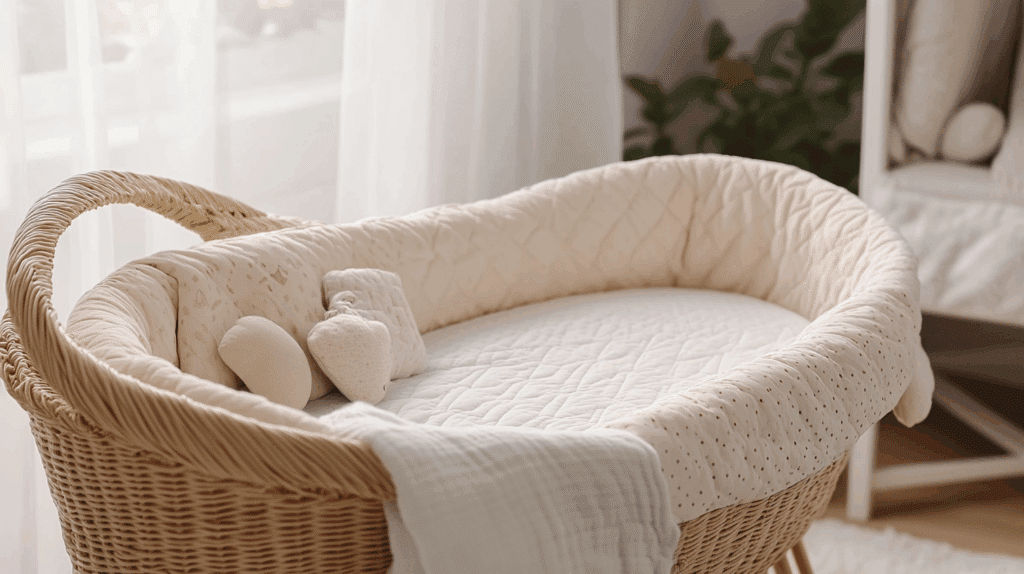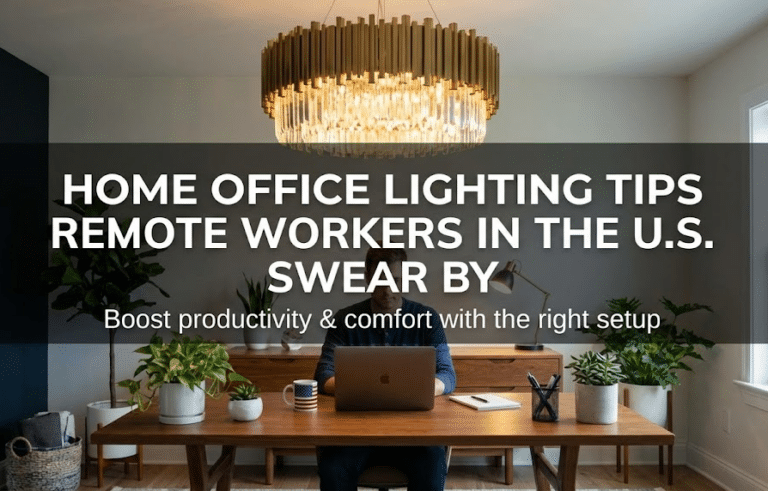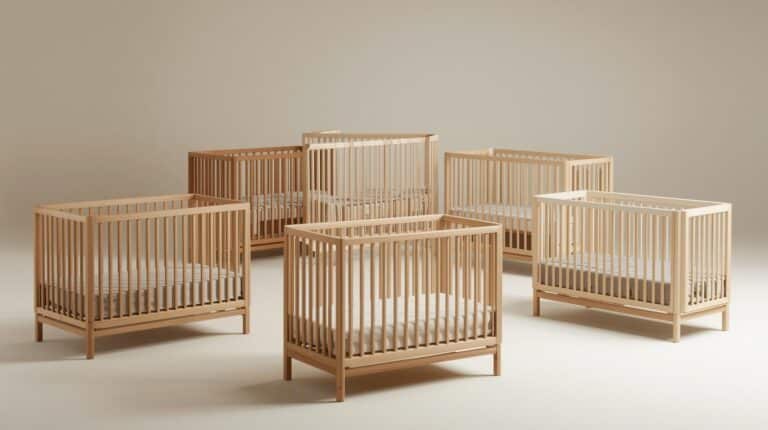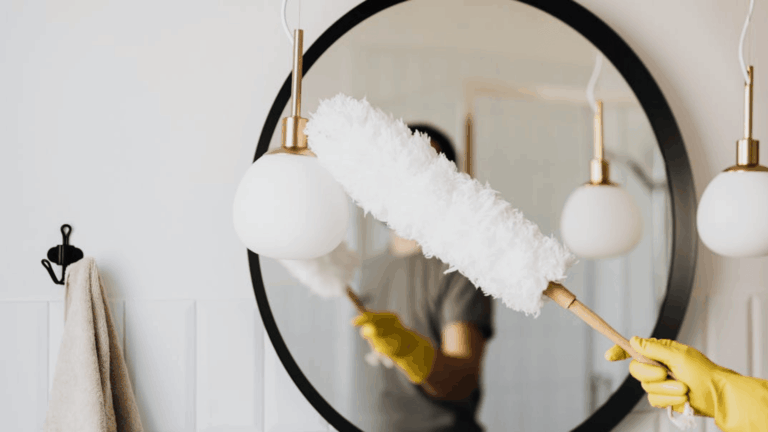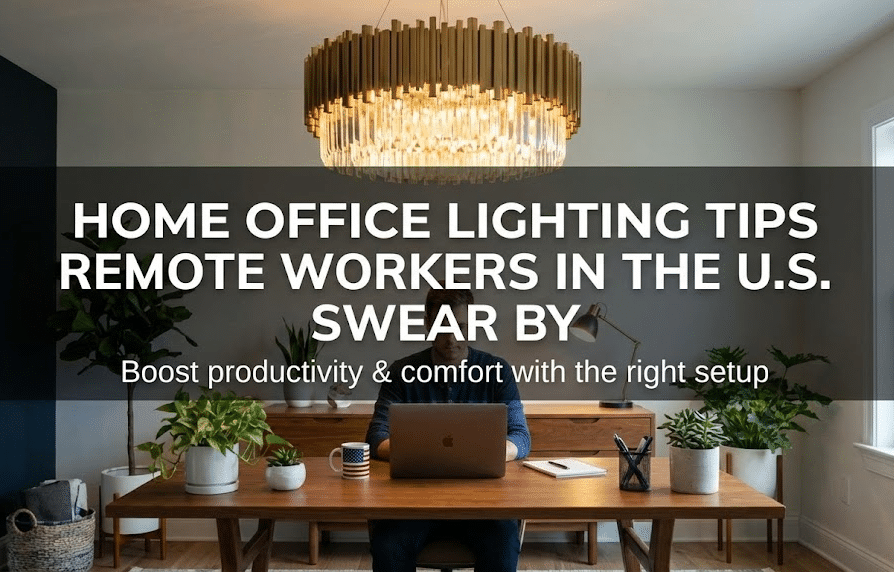Sleep is precious. Parents often find themselves wide awake at 3 AM, watching their little one who refuses to sleep in the bassinet.
The baby who slept so well in your arms now screams the moment they touch the bassinet mattress. Many parents face this exact problem every night.
There are simple ways to help your baby feel safe and comfortable in their bassinet.
This article will show you how to spot the reasons your baby won’t sleep in bassinet and what you can do about it.
What is a Baby Bassinet?
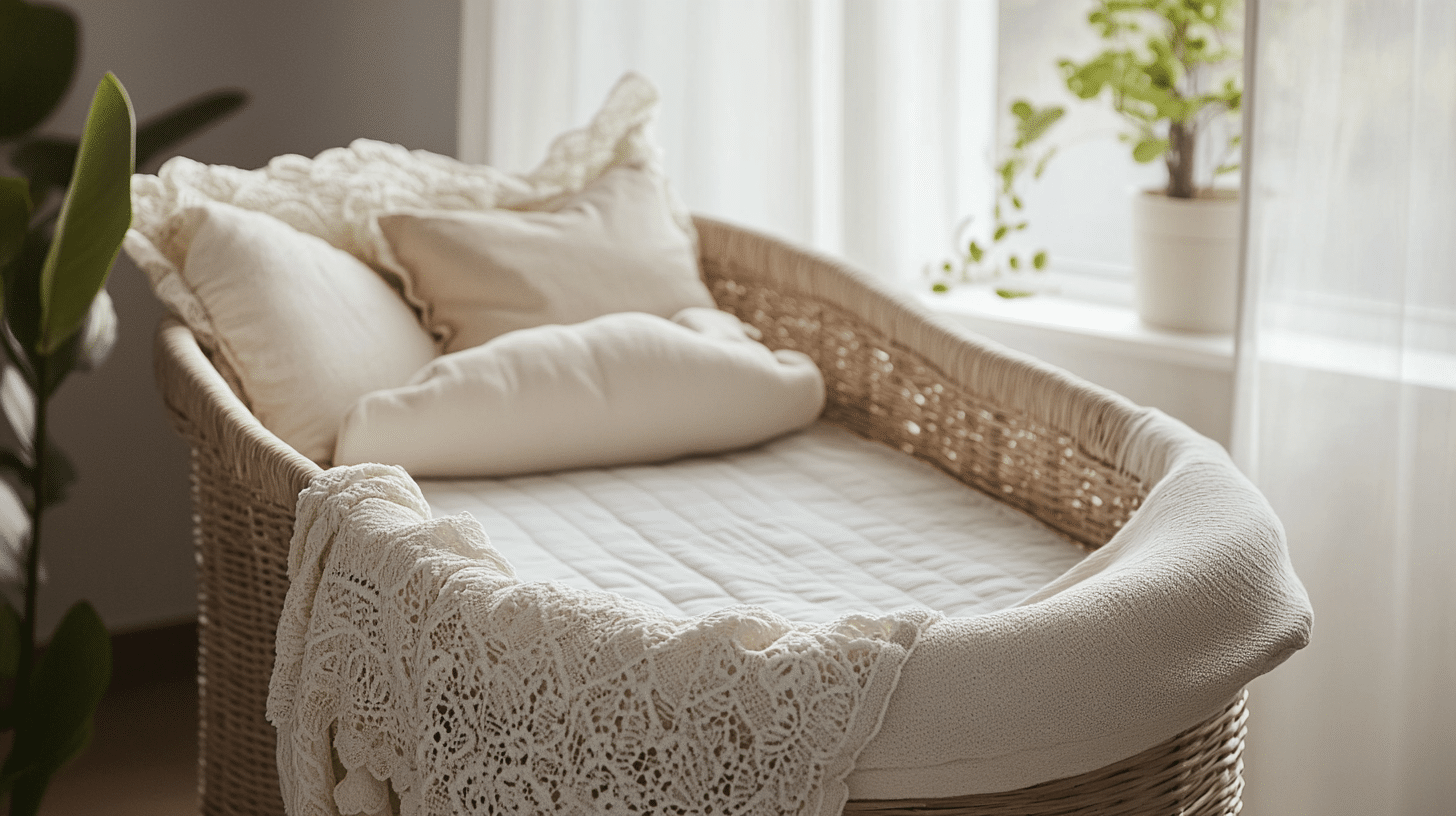
A baby bassinet is a small, cozy bed made just for newborns and young babies, usually up to about four months old. It’s designed to give your baby a safe and comfortable place to sleep during those early months.
Most bassinets have high or mesh sides for good airflow and to keep your baby from rolling out. They’re also lightweight and portable, so you can easily move them from room to room.
Parents often keep a bassinet close to their own bed, which makes nighttime feedings and check-ins much easier. The snug, womb-like space helps newborns feel secure and can make the transition to sleeping outside the womb smoother.
Because of their compact size, bassinets are a smart choice for small spaces and, when used safely, help reduce the risk of Sudden Infant Death Syndrome (SIDS).
Why Won’t my Baby Sleep in The Bassinet?
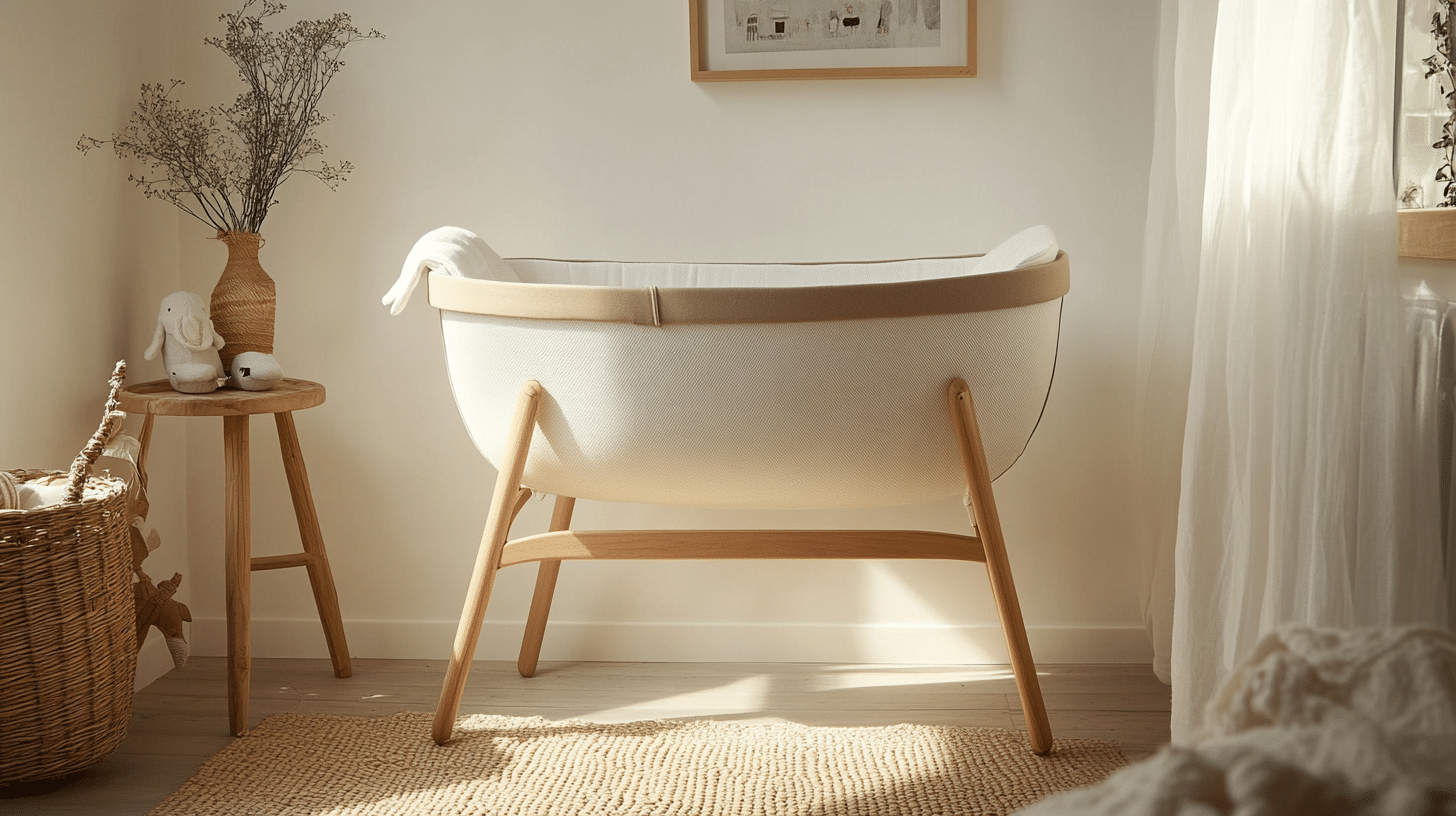
Here’s why your baby won’t sleep in bassinet and what might be causing the fussiness. Understanding these reasons can help parents find the right solution to make bedtime easier for everyone.
Need for Closeness
Newborns spend months in the womb, surrounded by warmth and constant movement.
After birth, many babies crave that same closeness and security, which is why they often sleep better when held or snuggled up with a caregiver.
The bassinet, while safe and recommended, can feel too open and unfamiliar.
Babies may fuss or refuse to settle because they miss the comfort of being close to someone, especially during sleep times. This need for closeness is natural and usually gets better as your baby grows and adjusts to life outside the womb.
Startle Reflex (Moro Reflex)
The startle reflex, also known as the Moro reflex, is a natural reaction in newborns where their arms and legs suddenly jerk or fling out, often in response to movement or noise.
When placed in a bassinet, this reflex can make babies feel insecure, causing them to wake up suddenly or cry.
In your arms, they feel more supported and less likely to startle themselves awake.
Swaddling can sometimes help by keeping their arms snug and reducing the effects of the startle reflex, helping your baby feel more secure in the bassinet.
Discomfort or Uncomfortable Sleep Environment
Babies are sensitive to their surroundings, and even small things can make them uncomfortable in the bassinet.
Sleep can be difficult for babies :
- Who is too hot or too cold
- Have a wet diaper
- Have a mattress that is too firm/soft
- Noise, bright lights, or a room that feels too different from being held can also disturb their rest
Making sure the bassinet is set up safely and comfortably, with the right temperature and a firm, flat mattress, can make a big difference in helping your baby sleep better.
Gas, Reflux, or Colic
Digestive issues like gas, reflux, or colic are common reasons babies struggle to sleep flat in a bassinet.
Lying down can make reflux or gas pain worse, causing discomfort and frequent waking. Babies with colic may cry for long periods and have trouble settling anywhere, including the bassinet.
Burping your baby after feeds and holding them upright for a while before laying them down can sometimes help ease these problems and improve sleep.
Overtiredness or Overstimulation
When babies miss naps or get too much stimulation from lights, sounds, or activity, they can become overtired.
An overtired baby often has a harder time falling and staying asleep, even in a comfortable bassinet.
Signs of overtiredness include fussiness, crying, and trouble settling down. Creating a calm, dim environment and sticking to a regular sleep routine can help your baby relax and get the rest they need.
Outgrowing the Bassinet
Bassinets are designed for newborns and young babies, but as your child grows, they may become too big or active for the small space.
If your baby seems cramped, tries to roll over, or has reached the weight or size limit for the bassinet, it may be time to move to a crib.
Making this transition at the right time can help your baby sleep more comfortably and safely.
Where Should I Place the Bassinet for Better Sleep?
Now you understand why the baby won’t sleep in bassinet. We will also understand where to put the bassinet for better sleep. The best place to put your baby’s bassinet is right next to your bed for better sleep and safety.
This makes it easy to check on your baby, feed, and comfort them during the night without having to walk far.
Make sure the bassinet is on a flat, firm surface and keep it away from windows, heaters, cords, curtains, and anything that could fall in or create a hazard.
The area around the bassinet should be clear and safe, with no pillows, stuffed animals, or loose bedding inside. Placing the bassinet close by but in a clutter-free spot helps your baby sleep safely and soundly.
The Importance of Bassinet Sleep for Your Baby’s Development
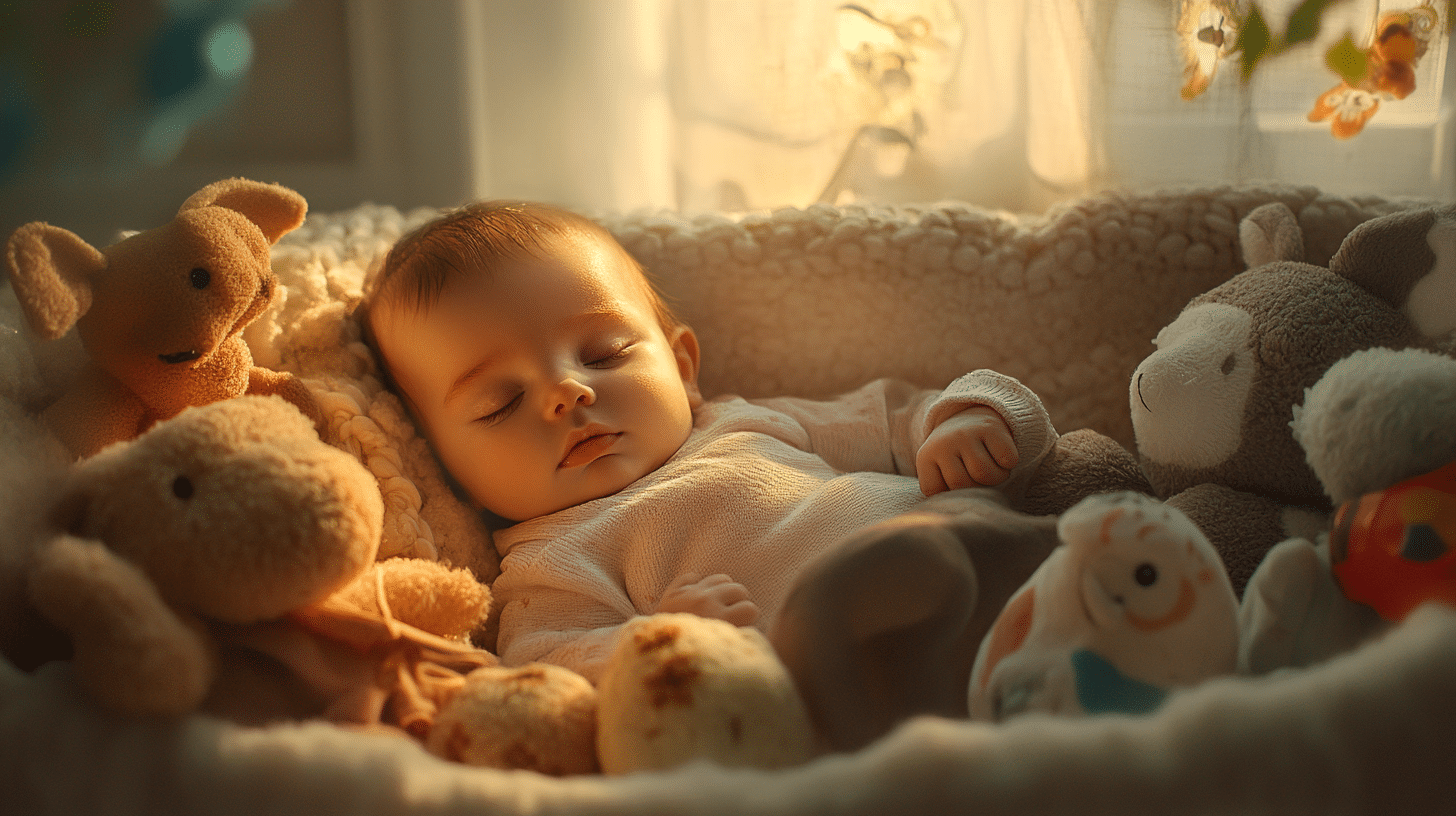
A good night’s sleep in a bassinet plays a big role in a baby’s growth and health. Understanding why bassinet sleep matters can help parents support their baby’s development from the very start.
- Supports Safe Sleep: Bassinets are designed with safety features like high sides and firm, flat mattresses.
- Encourages Healthy Sleep Habits: Sleeping in a bassinet helps babies learn to sleep on their own, which is an important step for building good sleep routines that last as they grow older.
- Promotes Better Monitoring: Keeping your baby close in a bassinet makes it easier to watch over them, spot any changes in breathing or movement, and respond quickly to their needs.
- Creates a Consistent Sleep Environment: Using the bassinet for naps and nighttime sleep helps babies associate rest with the bassinet, making it easier for them to settle down and sleep longer.
- Boosts Emotional and Physical Growth: Quality sleep in a safe, snug space supports your baby’s brain development, physical health, and emotional well-being.
- Offers Convenience for Parents: Bassinets are portable, making it simple to keep your baby nearby for nighttime feedings and comfort, which benefits both baby and parents.
The Bottom Line
Getting a baby to sleep in a bassinet takes time and patience.
Parents now understand the main reasons their baby won’t sleep in this new space – from physical discomfort to the need for better sleep habits.
Most babies can learn to feel safe in their bassinets with small changes to their sleep space and routine.
They can check if there are medical reasons behind sleep troubles. With the right approach, both parents and babies can soon enjoy better sleep.


